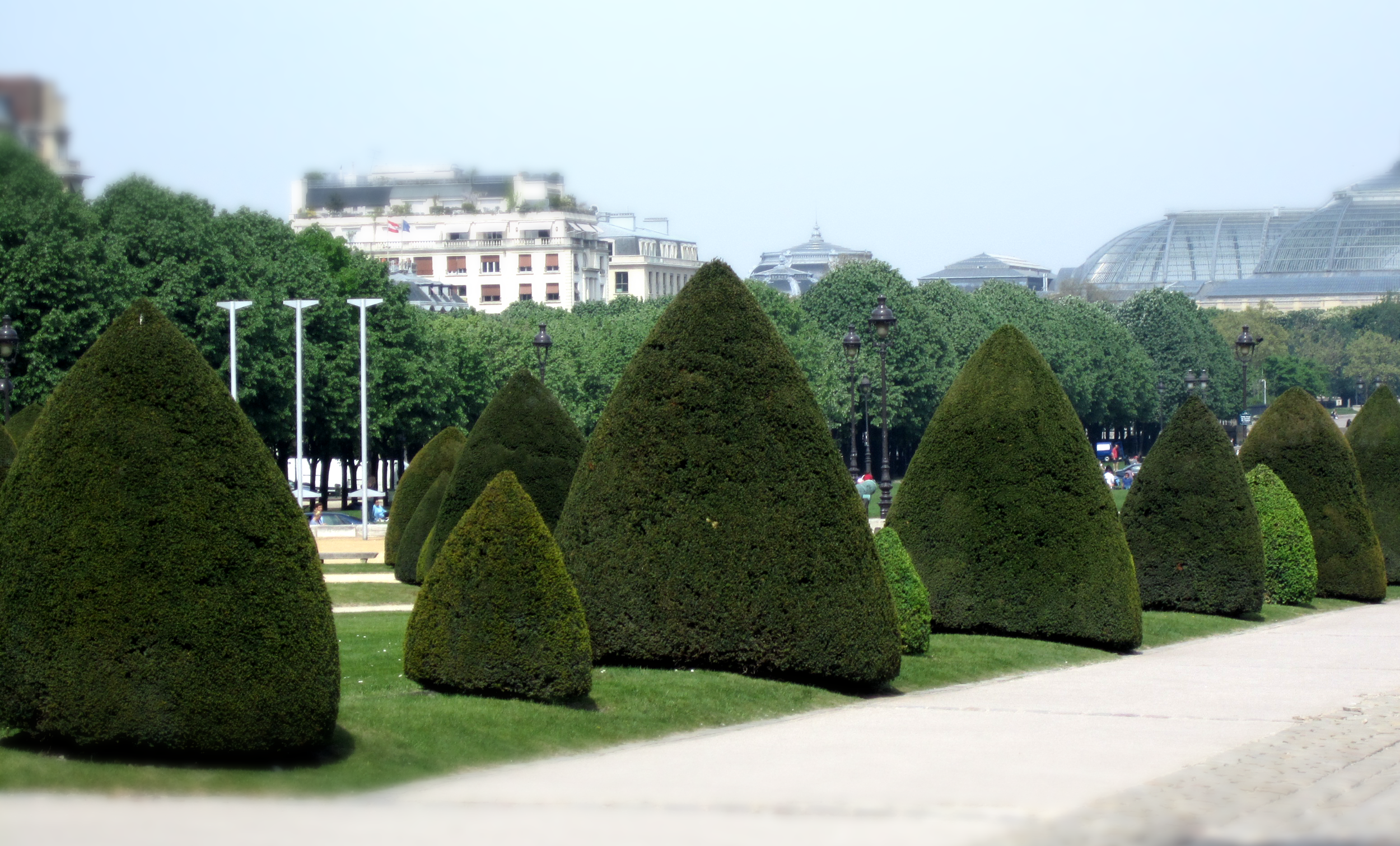In a way, gardening presents many parallels with meditation. Just as one can attempt to bring order to one's thoughts, landscape design has sought to bring order to the seemingly chaotic state of nature. Formal French gardens, such as those seen at the North entrance to the Musée de l'Armée below, are a good example of the extent of such enforcement.
Geometrically trimmed specimens at Musée de l'Armé, Paris. Image by Alejandra Feliciano.
Some would argue that such extreme formal styles were simply a vehicle for the wealthy to showcase their power--since such gardens required a wealth of staff and resources to maintain. Others could say formal gardens are an exercise in demonstrating man's power over nature. (Yield, yea offensively shaped specimen!)
If the intent was to conquer nature, I'd say we've succeeded. We have seen the extent of the power we can exert over the natural order. Here in Iowa, the entire landscape is artificial--an ocean of corn and soybean crops. This environment is just as manufactured as dense rows of skyscrapers.
An artificial landscape.
But were we out to conquer nature solely to display our prowess?
All design is an exercise in subjective selection and is inherently unnatural. There is no doubt that in exercising the order brought by design, we continue to gain much knowledge on specimens and their relationships with ecosystems. We seek order, and in doing so we further our understanding of the world around us. Regretfully, such practice is not self-sustaining. By replacing all natural environments with designed ones, we increasingly eliminate future opportunities to further our understanding.
So instead of being lead blindly by this desire to control, what role should we play? Today I'll let my mind settle over a thought for finding such balance.

